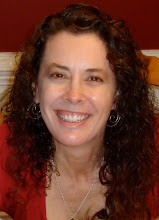Today's devotion, yesterday's devotion, as well as the devotion for Monday are a bit different as we look at some of the symbols of Easter to find out their meanings.
The Lamb:
The lamb is a particularly important Easter symbol in many countries. It represents Jesus and relates His death to that of the lamb sacrificed on the first Passover. Christians traditionally refer to Jesus as "the Lamb of God." "The next day John saw Jesus coming toward him and said, "Look, the Lamb of God, who takes away the sin of the world!" John 1:29
In many homes, a lamb-shaped cake decorates the table. Many Eastern Orthodox Christians hang pictures of the Easter lamb in their homes.
Hot Cross Buns:
Hot cross buns, now eaten throughout the Easter season, were first baked in England to be served on Good Friday. The buns have a cross of icing on the top. Some people have suggested the connection to the ancient sacramental cakes. They are generally only served during the Lenten season, preserving their Christian significance.
Easter Customs:
A number of popular customs are observed during the Easter season. The majority of Christians follows some of
these customs. Others are observed in a particular area or by a particular group.
Carnivals:
Carnivals provide opportunities for feasting and merrymaking before the solemn fast days of Lent (the 40 days before Easter). The word carnival comes from the Latin word carnelevarium, which means removal of meat. The most famous carnival is the Mardi Gras, celebrated on Shrove Tuesday, the day before Lent begins. Mardi Gras is a French term that means Fat Tuesday. It refers to the fat ox that traditionally led a procession on Shrove Tuesday in France. Carnivals often feature parades in which people wear elaborate costumes.
Easter Eggs:
Exchanging and eating Easter eggs is a popular custom in many countries. In most cases, chicken eggs are used. The eggs are hard-boiled and dyed in various colors and patterns. Many countries have their own traditional patterns. Probably the most famous Easter eggs are those designed in Ukraine, Poland, Russia and Hungary, where Christians decorate the eggs with complicated red, black, and white patterns.
In many countries, children hunt for Easter eggs hidden about the home or yard. Children in the United Kingdom, Germany, and some other countries play a game in which eggs are rolled against one another or down a hill. The egg that stays uncracked the longest wins. Since 1878, children in Washington, D.C. have been invited to roll eggs on the White House lawn.
Passion Plays:
Passion Plays dramatize the Easter story. Such plays have been performed during the Easter season since the Middle Ages. The most famous one is usually presented every 10 years in Oberammergau, in southern Germany. It dates from 1634. In the United States, Passion Plays are performed annually in several cities.









No comments:
Post a Comment